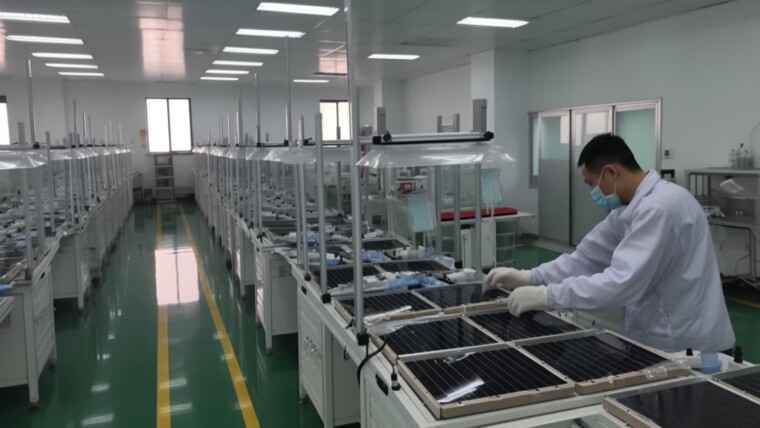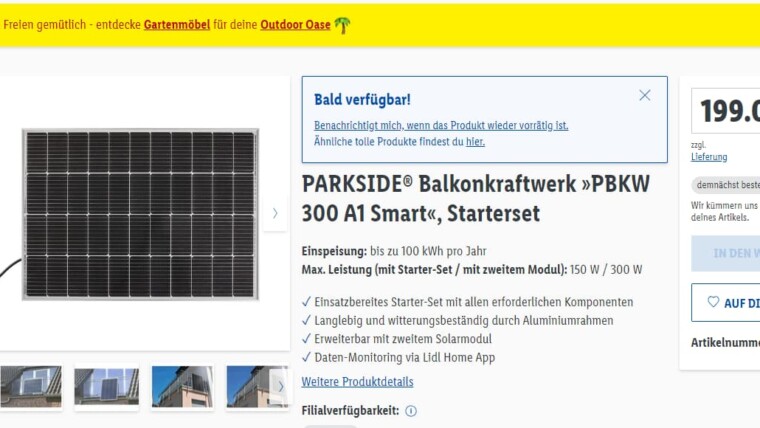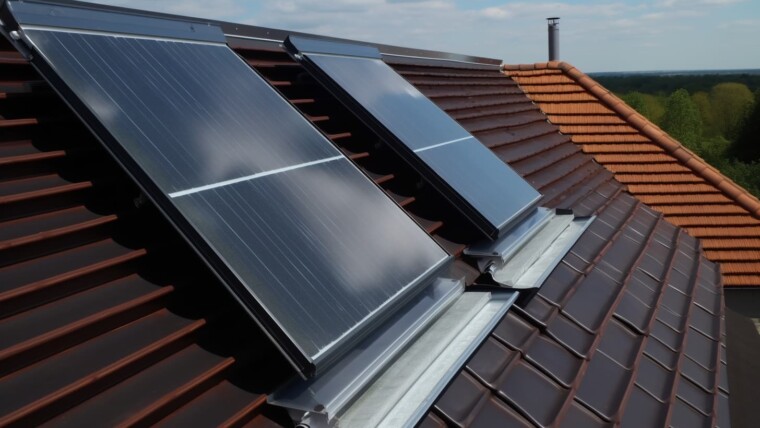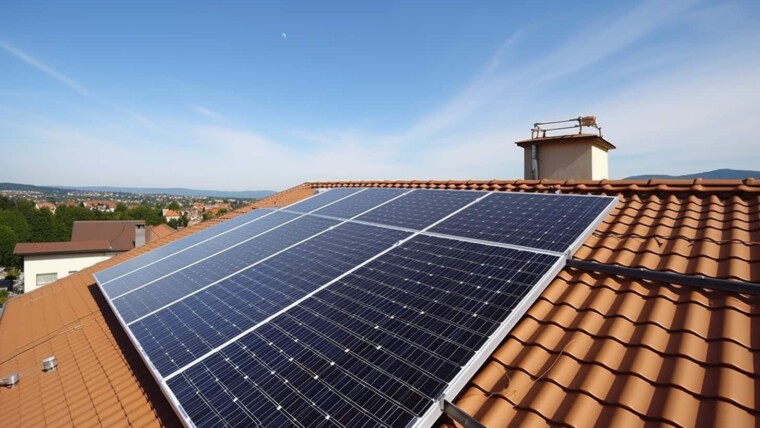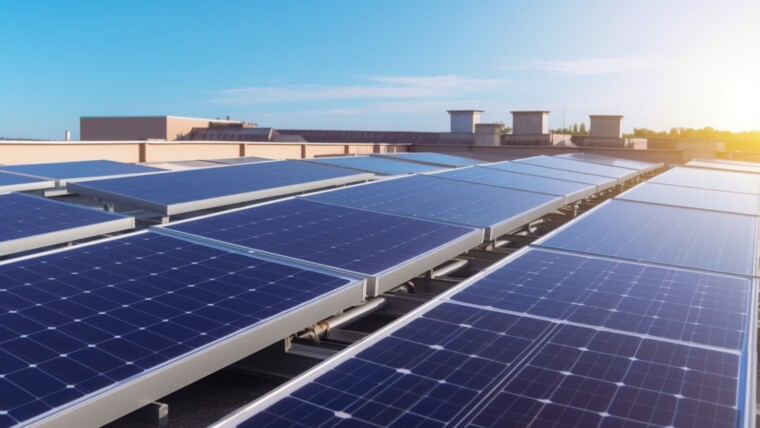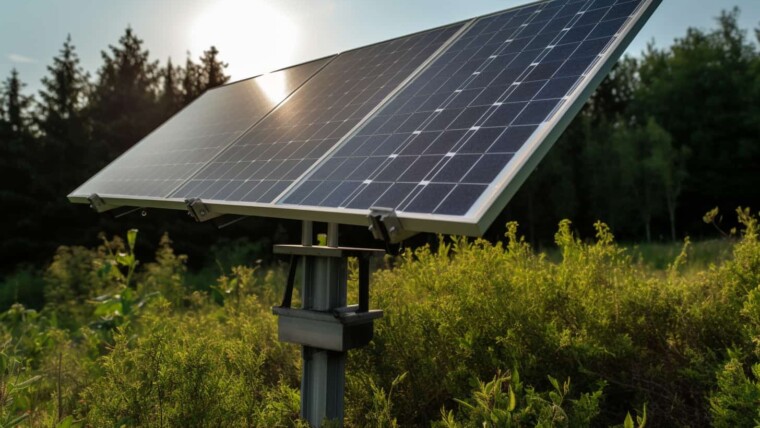The efficiency of a solar panel is an essential criterion for assessing its performance, as it determines the equipment's ability to convert solar energy into electricity. The higher the yield, the more efficient the solar panel.
In this article, we'll explain what the yield of a solar panel is, how to calculate it (with a concrete example) and the factors that influence it. We'll also give you a few tips on how to optimize the yield of your solar system and get a quicker return on your investment. We're off!
What is the efficiency of a solar panel?
The efficiency of a solar panel, also known as energy efficiency, is a parameter that indicates the proportion of incident solar energy that is converted into "useful" electrical energy by the solar panel. It's a key indicator of a solar panel's performance, since it measures how efficiently it converts the solar energy it receives into electrical energy.
As you will see in the rest of this practical guide, solar panel efficiency is a complex parameter that depends on many factors relating to materials, design, environmental conditions and installation. Improving the efficiency of solar panels is a very dynamic area of research, in line with the challenges of sustainable development, but also against the backdrop of the energy crisis.
How do I calculate the efficiency of a solar panel?
Usually expressed as a percentage (%), solar panel efficiency (η ) is determined by dividing the electrical power produced by the panel, or "P_out", by the solar power incident on the panel surface, or "P_in", and multiplying by 100 to obtain a percentage.
Here is the formula to use to calculate the efficiency of a solar panel:
As we shall see, several factors have an impact on the efficiency of solar panels, but there are more or less reliable averages depending on the type of solar cell (between 10 and 22 %), with a theoretical limit set at 31 %.
Example of calculation of the yield of a solar panel
Let's take an example of how to calculate the efficiency of a solar panel. Suppose you have a solar panel whose maximum electrical output (Pmax) and surface area you know, and you want to calculate its efficiency.
- Maximum electrical output power (Pmax) : let's assume that the solar panel has a maximum power of 300 W ;
- Surface of the solar panel (S): suppose it is 2 m² ;
- Standard solar irradiation (G) : 1 kW/m² (1000 W/m²) ;
- Incident solar power (P_in): Multiply the surface area of the solar panel by the standard solar irradiation. P_in = S * G = 2 m² * 1000 W/m² = 2000 W ;
- Solar panel efficiency (η) : η = (Pmax / P_in) * 100 η = (300 W / 2000 W) * 100 = 15 %
In this example, the efficiency of the solar panel is 15 %. This means that 15 % of incident solar energy is converted into electrical energy, while the rest is lost as heat or reflection.
Why measure the efficiency of a solar panel?
Efficiency is a decisive KPI for assessing the overall performance of solar panels, both for professionals and end-users. Measuring the efficiency of solar panels enables you to evaluate and compare the performance of different solar technologies, to size and optimize photovoltaic installations, and, if you're a professional or an enthusiast, to keep up with technological advances in the field of solar energy.
We have compiled for you the various uses of solar panel yield measurement:
| How to calculate solar panel efficiency | Explanation |
| Technology comparison | Efficiency compares the performance of different solar panel technologies and semiconductor materials. This helps researchers and manufacturers identify the most promising technologies and focus their efforts on developing and improving them. |
| Choice of the solar panel | For installers and consumers alike, efficiency is an important criterion when selecting solar panels. A panel with a high efficiency will produce more electrical energy for a given surface area, which is particularly important in situations where space is limited. |
| Calculating energy production | Knowing the efficiency of a solar panel is essential for estimating the energy production of a photovoltaic system. Installers and engineers can use this information to correctly size systems and determine how much energy a system will produce over its lifetime. |
| Quality and reliability assessment | High efficiency is generally associated with superior manufacturing quality and high-quality materials. By comparing the efficiency of solar panels from different manufacturers, consumers and installers can get an idea of product quality and reliability. |
| Monitoring technological progress | Measuring the efficiency of solar panels enables us to track progress in the research and development of new solar technologies. Researchers and manufacturers can thus assess the effectiveness of their innovations and direct their efforts to further improve the energy efficiency of solar panels. |
Let's take factor number 3. Solar panel efficiency is a crucial indicator of how much energy a photovoltaic (PV) system can produce over a given period. For example, if a 1 m² solar panel receives 1000 W/m² sunshine and has an efficiency of 20 %, the electrical power produced will be :
P_out = Yield × P_in × Area
P_out = 0.2 × 1000 W/m² × 1 m² (1 sq. ft.)
P_out = 200 W
Thus, this solar panel will produce 200 W of electrical energy under optimum conditions.
What's the difference between solar panel production and yield?
There is still a certain amount of confusion among the general public between solar panel output and efficiency. These two quantities are different, but closely linked:
- The efficiency of the solar panel measures the efficiency with which the panel converts incident solar energy into electrical energy. It is expressed as a percentage and is determined by comparing the electrical power produced by the panel with the solar power incident on its surface. It is therefore an indicator specific to the panelThese depend on the type of solar cell (mono-Si, multi-Si, CdTe, CIGS, etc.), manufacturing quality, optical and electrical losses, operating temperature and angle of incidence of the light;
- The productionrefers to the amount of electrical energy actually produced by a solar panel over a given period, usually expressed in kilowatt-hours (kWh) or megawatt-hours (MWh). Production depends on a number of factors, such as solar panel efficiency, the amount of incident solar energy (solar irradiance), environmental conditions (temperature, cloud cover and shading) and installation (orientation, inclination, quality of mounting system).
What factors affect the efficiency of a solar panel?
Solar panel efficiency is a complex parameter that depends on a number of factors. The following table lists these variables, with more detailed explanations in the second column for a more informed audience.
| Factor | Explanation | Influence on performance(score out of 5) |
| Type of solar cells | Single-crystal silicon (mono-Si): yield between 18 % and 22 %Solycrystalline silicon (multi-Si): yield between 15 % and 18 %Tadmium cellide (CdTe) : yield between 10 % and 12 %Copper indium gallium diselenide (CIGS): yield between 12 % and 16 %Perovskites: potential yield up to 25 % (emerging technology) | 5/5 |
| Manufacturing quality | The level of defects in the semiconductor material can increase charge carrier recombination.Uniform thickness and composition of the absorber layer improve light absorption and efficiencyThe quality of the metal contacts influences the electrical losses observed. | 4/5 |
| Optical losses | Reflectance (percentage of light reflected by the panel surface) and parasitic absorption by non-active materials have an impact on efficiency. | 3/5 |
| Electrical losses | Not least because of the internal resistance of the semiconductor material, interconnections and metal contacts. | 3/5 |
| Operating temperature | This factor is measured by the temperature coefficient. For silicon cells, efficiency decreases by 0.3 % per degree Celsius above 25° C. | 4/5 |
| Angle of incidence of light | Absorption is at its highest, and efficiency is optimal, when the light is perpendicular to the surface of the solar panel. | 3/5 |
| Shading effects | They can be neutralized by using bypass diodes and optimizing the design. | 3/5 |
| Installation | Orientation, tilt and ventilation all have an impact on solar panel performance. | 4/5 |
How to optimize the yield of a solar panel?
The yield of a solar panel depends on a number of factors, some of them exogenous, but the user has a little leeway to optimize it. Here's how.
#1 The level of sunlight
The greater the solar irradiation, the higher the energy output. It's crucial to choose a location with a good level of sunshine to maximize solar panel performance. Meteorological data and the Solar Atlas can help you determine the solar irradiation in your area.
#2 Orientation of solar panels
In the northern hemisphere, solar panels should face south to capture maximum sunlight. Conversely, in the southern hemisphere, they should face north. East or west orientation can also be considered, but may slightly reduce overall efficiency.
#3 The tilt of the solar panels
The optimum angle of inclination depends on the latitude of the installation site and varies throughout the year. As a general rule, the optimum tilt angle is equal to the latitude of the installation site. To maximize yield, solar panels can be tilted at different times of the year.
#4 The influence of temperature
As the temperature rises, solar panels become less efficient. Good ventilation and sufficient spacing between the panels and the roof can help maintain optimum operating temperature and improve yield.
#5 The influence of shading
Shading can have a significant negative impact on solar panel performance. Wherever possible, avoid installing solar panels in areas prone to shading, such as under trees or near tall buildings. The use of solar panels equipped with bypass diodes or micro-inverters may reduce the impact of partial shading.
#6 Solar Panel Technology
Monocrystalline silicon solar panels are generally more efficient than those based on polycrystalline silicon or other technologies.
#7 Solar Panel Maintenance
Dust, debris and dirt can accumulate on the surface of the panels and reduce their performance by blocking sunlight.
How to make a solar panel installation profitable
On average, a solar panel investment pays for itself in around 15 years... and this break-even point tends to accelerate as panel prices fall and energy prices rise. There are a number of measures you can take to accelerate your return on investment:
- Evaluating the solar potential of the site before installation ;
- Choice of quality solar panels based on monocrystalline silicon;
- Optimized orientation and inclination throughout the day and year;
- Make sure that the installation is carried out by qualified professionals and that the sizing of the system is adapted to your energy needs;
- Carry out regular maintenance on your solar system: clean panels, inspect cables, supports and inverters... ;
- Using a quality inverter ;
- Adapt your energy consumption to the hours of sunshine, and consider installing an energy storage system to make use of excess energy;
- Take advantage of government incentives and grants;
- If your solar system produces more electricity than you consume, consider selling the surplus energy back to the grid.

Julien G.
Juliena mechanical engineering graduate and specialist in climate engineering since 2009, has become a writer specializing in renewable energies, with expertise in heat pumps and photovoltaic solar panels for individual housing.
See all articles by this author

